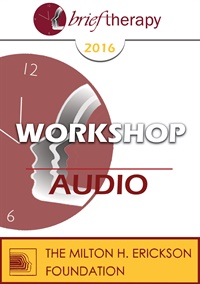BT16 Workshop 31 - Informal Trance Induction in Couples Therapy: Partners in Chairs - Stan Tatkin, PsyD , MFT
- Average Rating:
- Not yet rated
- Topic Areas:
- Couples Therapy | Trance | Workshops | Hypnotic Induction
- Categories:
- Brief Therapy Conference | Brief Therapy Conference 2016 | Pioneers in Couples and Family Therapy
- Faculty:
- Stan Tatkin, PsyD, MFT
- Duration:
- 3:11:14
- Format:
- Audio Only
- Original Program Date:
- Dec 11, 2016
- License:
- Never Expires.
Description
Description: This workshop (the first of two) introduces the use of informal trance and rolling chairs in couple therapy to support arousal regulation and deeper relational work. Drawing from the Psychobiological Approach to Couple Therapy (PACT), the session demonstrates how proximity, eye contact, and movement can elicit trance states, enabling therapists to access implicit issues. Techniques like the crossing and “down the middle” methods help clarify dynamics and promote secure functioning. Attendees learn to manage emotional states, reduce stress loads, and guide partners toward more resilient connection.
Syllabus Description: This first of two workshops will demonstrate the use of informal trance in couple therapy. PACT therapists use rolling chairs (office chairs) as a major therapeutic tool for both the couple and therapist in managing arousal, attention, and for inducing trance states. Attendees will learn the basic tenants of PACT and a common approach to inducing informal trance states in partners using rolling chairs. Partners go into a deeper state whereby the therapist can probe, prod, and investigate more implicit issues that plague the relationship. Attendees will view clinical video demonstrations as well as live demonstrations to further illustrate this technique.
Educational Objectives:
- Describe the three theoretical domains of PACT.
- Apply interventions using cross-questions, cross-interpretations, going down the middle, and bending metal.
- Use at least two ways of getting the couple into a trance state using chairs and cross questions.
- Assess partner capacity for contact maintenance.
- Analyze partner response by reading the face, eyes, voice, heart rate, and body movements.
*Sessions may be edited for content and to preserve confidentiality*
Credits
Handouts
| Ericksonian Learning Snapshot (247.3 KB) | 2 Pages | Available after Purchase |
Faculty

Stan Tatkin, PsyD, MFT Related Seminars and Products
Stan Tatkin, PsyD, MFT, is a clinician, researcher, teacher, and developer of A Psychobiological Approach to Couple Therapy (PACT®). He has a clinical practice in Calabasas, CA, where he has specialized for the last 15 years in working with couples and individuals who wish to be in relationships. He and his wife, Tracey Boldemann-Tatkin, developed the PACT Institute for the purpose of training other psychotherapists to use this method in their clinical practice.
Reviews
Rating: Not yet rated


